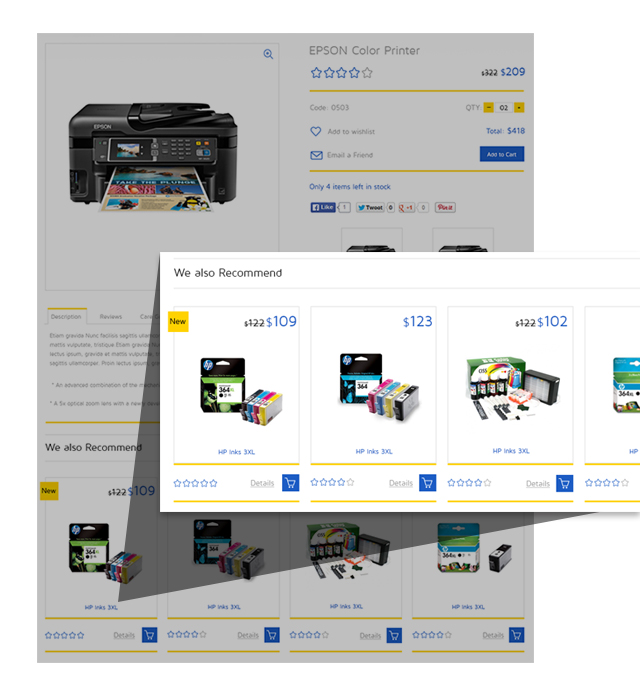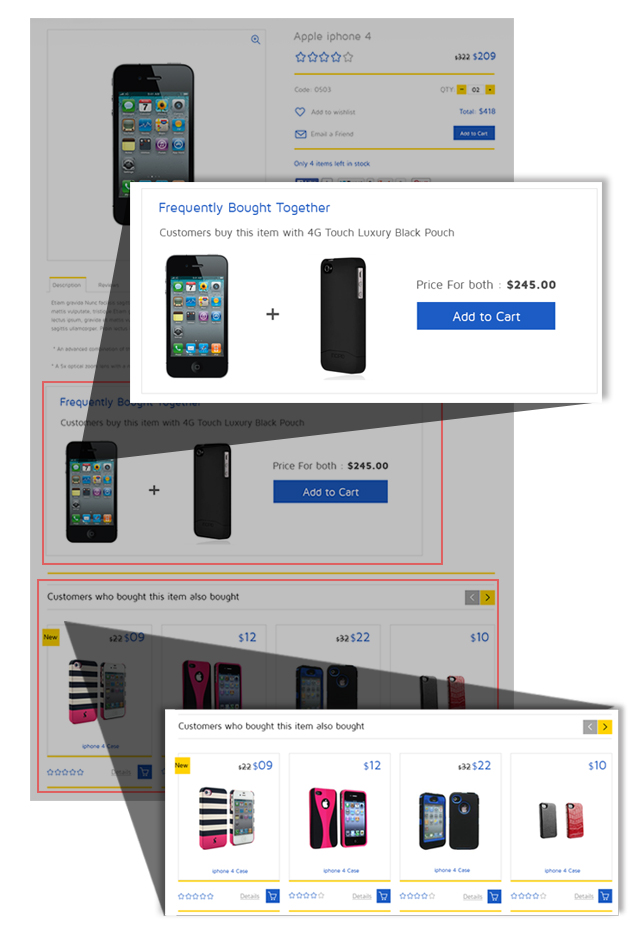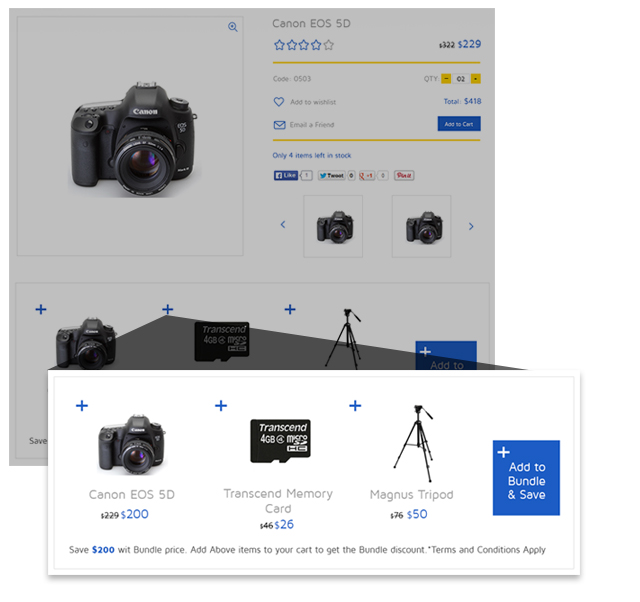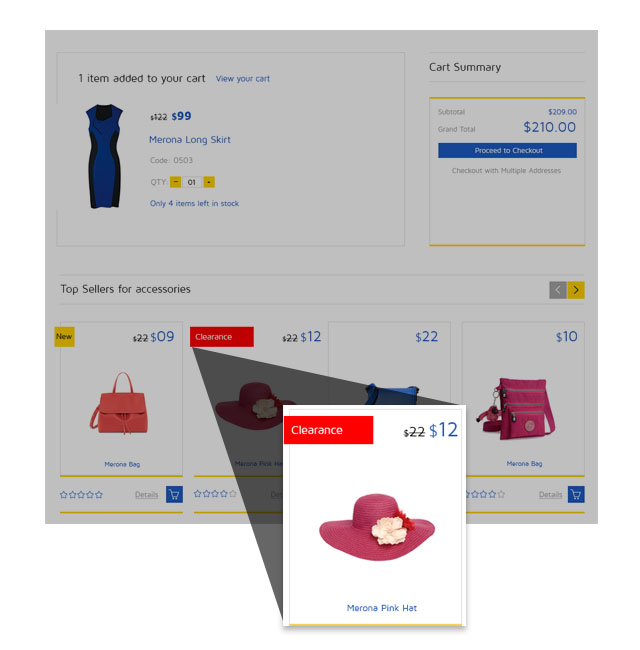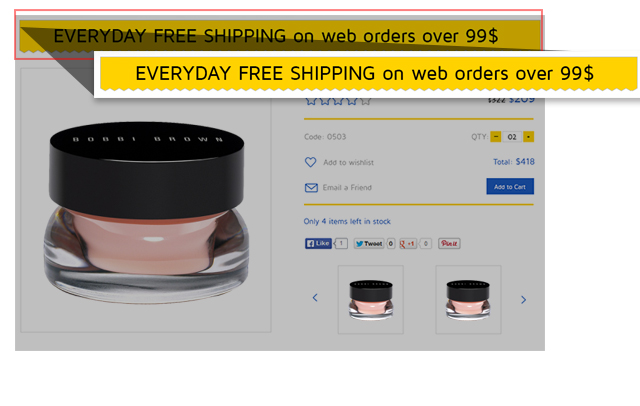8 Strategies to Cross Sell
better to your Customers
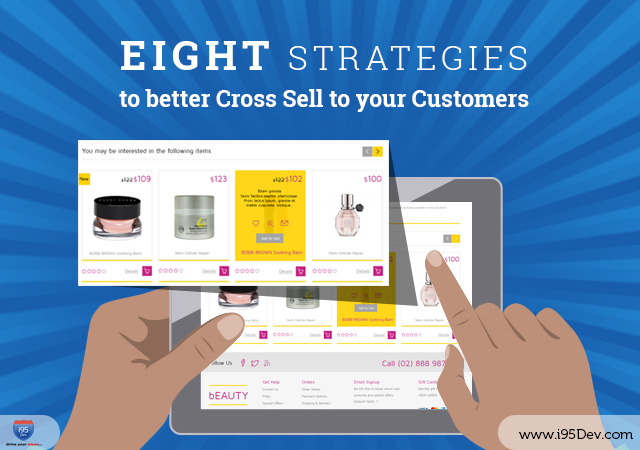
A classic case of cross-selling begins at the fast food joint you probably frequent. While you walk in to just grab a burger or pizza what you carry back is probably a complete fulfilling meal with sides and a soda to go with it! But how did that happen?
Let us look at an example of cross-selling in the world of e-commerce – consider the following scenario where the buyer is on the product page for Tank Dress and is presented with complementary buys to the actual product, at a reduced figure overall.
Amazon is perhaps the most popular in strategic cross-selling, claiming a significant climb in overall revenues as well as higher individual value per sale on its e-commerce store.
To understand better, cross-selling is simply the art of persuading customers to purchase additional products /services that are related to their purchase (complement the product/ products in their basket). While improving the customer experience, cross-selling also succeeds in boosting the profitability of your e-commerce business by identifying appropriate sales opportunities to increase customer encounters thus allowing scope for more conversion.
Now this exercise can be tricky as it bases itself completely on a thorough understanding of your products and consumer behavior on your website.
We attempt to list down a few strategies that can help cross-sell better to your customers thereby influencing a positive sale-
1) Leveraging Customer Data
Remember that a lot of data is available with you on your e-commerce store and all it needs is appropriate analysis for better cross-selling. With browsing and purchase history all that is needed is the exploration of data in search of consistent patterns or systematic relationships, analyze trends and buying behavior, categorize your audience and accordingly refer such selling to similar customers.
2) Complementary Products
Well, this largely depends on your product portfolio; do you have products that complement each other? Look at your product portfolio and identify products that can complement each other. For e.g. if you sell shoes, showcase shoe polish, laces, and socks or if you sell mobile, catch hold of attractive covers and other accessories for the last minute cross-sell. Ensure that what you try to cross-sell is cheaper than the original product and simple enough for your customers to make a purchase decision.
3) Also Bought and Frequently Bought Categories
Introducing ‘Frequently bought together’ or ‘Customers who bought this item also bought’ sections increase the chances of cross-selling. Customers purchasing a particular product may also have interests similar to other customers and this helps them discover products based on choices made by other customers in past. You will have to leverage your purchase history to identify these patterns.
4) Make it Relevant
Random suggestions do not work; cross-selling needs to necessarily project additional value to the customer. Product suggestions need to be relevant to the initial purchase and appeal to the interests of the customer. This points back to the importance of understanding the customer behavior on your e-commerce store.
5) Bundle Products
Bundling products is a progression from cross-selling, a strategy of identifying and pre-packaging products that go with each other naturally at an attractive price point. The idea behind this is to make customer advance a purchase decision (which they might have made in future) in exchange for a price discount. All you need is to find a benchmark price that will make it compelling enough for your customers to purchase while making a profit.
For example, you often see e-commerce stores selling books bundling all books in a series or from the same author as a single SKU and selling them at a discounted price.
6) Product Placement
Product placement is critical not only in physical stores but also in digital stores; placement of your products has a huge impact on your sales. To target buyers inclined to buy in an impulse it is essential to ensure that these items are relevant and inexpensive enough to help consumers take a decision.
For e.g. cross-selling an inexpensive wine glass at the end of a wine purchase just below the order summary can do wonders.
7) For Best Results
Leverage your domain and industry expertise to recommend other products to your customers. For example, few products go well with certain related products and often customers look for suggestions on such recommendations. For e.g. a specific shampoo labeled “For best results, use shampoo with conditioner Y” will not only be a very effective cross-selling technique but also establishes thought leadership for your brand.
8) Incentivize
Luring customers with offers such as “free shipping on orders more than $20” or “10% discount on orders more than $100” pushes them to buy that little more. Once a purchase is complete, you can even offer the customer a discount on the second purchase.
Conclusion
Cross-selling is not about manipulating customers. On the contrary, it is an effective way to improve your sales by showing customers products of their genuine interest that connects to their original purchase. There is this thin imaginary line between sincerely helping customers through cross-selling and being annoyingly pushy. Customers prefer cross-selling only if you stay within the boundaries of pertinence and restraint.



